BU G LE THE













FALL 2021 1
FALL 2021 | VOLUME 28:3
the United States

World War II. In November 1941, Ziesler and other nurses were stationed in Hawaii at the Schofield Barracks Station Hospital. This photograph, featuring Ziesler and a cloth map of Hawaii, sent home to her family is captioned, “Well, folks, X marks the spot—that little spec in the blue Pacific is us. What limbs— what's Hedy Lamarr got that I haven't?” WVM.1914.I001e
Read more about Rhoda Ziesler and her story on page 11.
7 | FROM THE SECRETARY 9 | FROM THE DIRECTOR 10 | EVERY VETERAN IS A STORY 12 | FROM THE COLLECTIONS 14 | PEARL HARBOR: 80 YEARS 17 | TOMB OF THE UNKNOWN SOLDIER 20 | HOLIDAYS IN THE FIELD 22 | TABLETOP WARGAMING 24 | FROM THE FOUNDATION 26 | CALENDAR OF EVENTS 27 | THANK YOU DONORS CONTENTS
This photo is of Rhoda A. Ziesler, a Manitowoc, Wisconsin resident who served in
Army Nurse Corps during

MUSEUM STAFF M ST
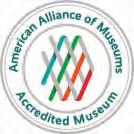
DIRECTOR
CHRISTOPHER L. KOLAKOWSKI | 608.266.1009
ASSISTANT DIRECTOR
JENNIFER VAN HAAFTEN | 608.261.6802
OPERATIONS ASSISTANT
ELISE MCFARLANE | 608.261.0534
ORAL HISTORIAN LUKE SPRAGUE | 608.261.0537
CURATOR OF HISTORY
KEVIN HAMPTON | 608.261.5409
PROCESSING ARCHIVIST
BRITTANY STROBEL | 608.800.6958
COLLECTIONS MANAGER
ANDREA HOFFMAN | 608.800.6957
REFERENCE ARCHIVIST
RUSS HORTON | 608.267.1790
REGISTRAR
SARAH KAPELLUSCH | 608.800.6955
CURATOR OF EXHIBITS
GREGORY KRUEGER | 608.261.0541
STORE MANAGER
GREG LAWSON | 608.261.0535
SENIOR MARKETING SPECIALIST

JENNIFER STEVENSON | 608.264.6068
CURATOR OF VETERAN ART
YVETTE PINO | 608.266.1854
EDUCATION SPECIALIST
ERIK WRIGHT | 608.264.7663
COMMENTS & SUBMISSIONS
We welcome your comments and editorial submissions concerning The Bugle. Comments and submissions should be sent to Jennifer Stevenson at Jennifer.Stevenson@dva.wi.gov.
THE WISCONSIN VETERANS MUSEUM
30 WEST MIFFLIN STREET
MADISON, WI 53703 ON THE CAPITOL SQUARE 608.267.1799
www.wisvetsmuseum.com
MUSEUM HOURS
Closed Mondays Tuesday−Saturday 10:00 AM–5:00PM
Sunday (April–September) Noon–5:00 PM
RESEARCH CENTER HOURS By appointment only 608.267.1790
FOUNDATION BOARD OF DIRECTORS
PRESIDENT
DAN CHECKI
VICE PRESIDENT
JOANE MATHEWS
TREASURER
DAN HEILIGER SECRETARY
TOM HUISMANN
DIRECTORS AT LARGE ALEJANDRO ARANGO-ESCALANTE
DAN GREENE
WILLIAM F. HUSTAD
TIMOTHY LA SAGE
JOSEPH NAYLOR
PHIL PRANGE
BOB SIMMONS
NATHANIEL T. MILSAP, JR.
FOUNDATION STAFF
EXECUTIVE DIRECTOR





JENNIFER CARLSON
608.261.0536
JENNIFER.CARLSON@WVMFOUNDATION.COM

COLLECTION DONORS
A most sincere thank you to all who donated to our collection from May 2021–August 2021. Thank you for your generosity and support of the Wisconsin Veterans Museum.
Eileen Gerhart
Beth Gilpin
Lorraine Palzkill
Goeden
Aaron Greisen
Philip Hamilton
Ryan Howell
Jeffrey Jerred
Margaret Lauer
George Mepham
Anita Powers
Kathy Roberg
Patti Sinclair
Frank L. Smith
Tom Spike
Linda Von Uhl
Gary Werner
Ward Zischke
Glen Lee
David O. Christianson and Cheryl L. Christianson Haugen
MUSEUM MISSION
The mission of the Wisconsin Veterans Museum is to commemorate, acknowledge, and affirm the role of Wisconsin veterans in America’s military past and present.
The Bugle is published quarterly for our members and friends through the support of the Wisconsin Veterans Museum Foundation. The Wisconsin Veterans Museum Foundation provides funds for the support of artifact acquisitions, exhibit production, and the development of educational programs.
Us Online!
Join


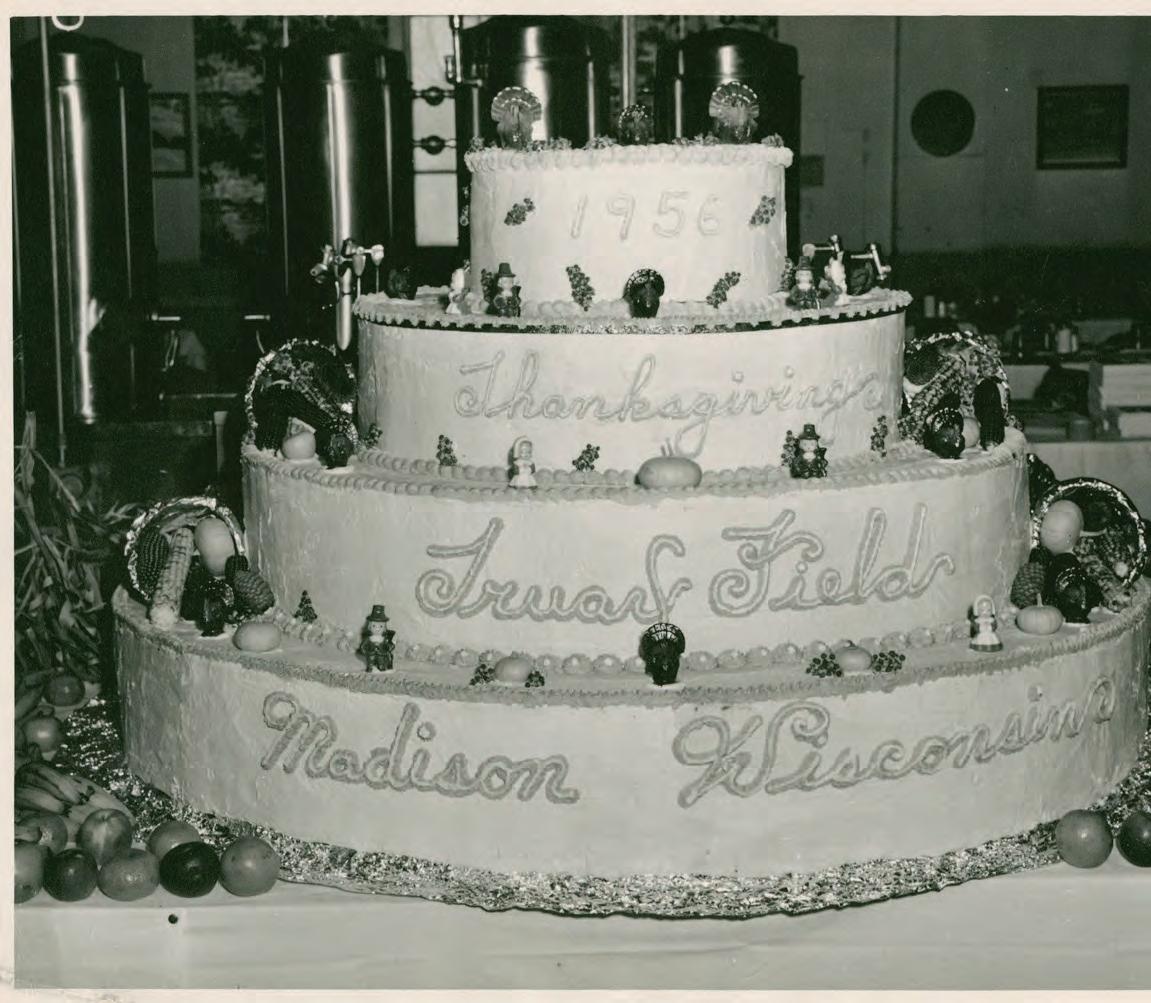
6
James E. McMahon, a Madison, Wisconsin resident, served in World War II and the Korean War as a cook in the Marine Corps and the Air Force. After the Korean War, McMahon worked as an Air Force commissary stock handler at Truax Field. This cake, decorated in 1956, was made for the Air National Guard Base’s celebration of Thanksgiving. WVM.0380.I005
FROM THE SECRETARY

Hello, and thank you for your support of the Wisconsin Veterans Museum. The end of any year is often a time of reflection and review. The year 2021 certainly has its own trials and tribulations, but it also has had its own successes and opportunities too.

The Wisconsin Veterans Museum is on a dynamic path forward. Visitors have responded positively to the refreshed exhibits and new stories that are showcased. The virtual programs have built a national and even international audience for the museum which is just amazing. Discussions and studies continue about a possible future location, so we can even better exhibit and share the tremendous stories and legacies of Wisconsin’s veterans. I am excited about where the staff is taking the museum.
As a part of the Wisconsin Department of Veterans Affairs, the Wisconsin Veterans Museum is a benefit for our veterans as a way to preserve their experiences for the future. Indeed, as the museum says, “Every Veteran Is A Story,” which is true no matter what era, service, or circumstance. As I travel around the state, I enjoy listening to veterans’ experiences and sharing some of the powerful stories in the museum’s collections. This is a way to connect people across the years and it is amazing the impact it has. As an example, holidays on duty can be lonely and emotional times, and yet service members always seem to find a way to bring a bit of the familiar into their own festivities; the holiday stories in this issue show what a universal experience that is for veterans.
We know there are always more stories to learn and share. One initiative we look forward to continuing is collecting photos of every Wisconsin veteran that we can. It is important to recognize the faces behind the facts and preserve them. Please consider submitting a photo of a Wisconsin veteran on the museum’s website.

As we close this year, and look to the next, I look forward to what the future may bring.
With shared camaraderie,
Mary Mary M. Kolar Secretary, Wisconsin Department of Veterans Affairs

FALL 2021 7
k
oftenatimeofreflection
This card, sent to Harry N. Loeb by cousins Bernice and Diane Freedman, wishes him a happy new year. Rosh Hashanah, a Jewish high holiday typically celebrated with special foods, traditions and services at synagogues, fell on September 17-19 in 1944. WVM.1988.M001



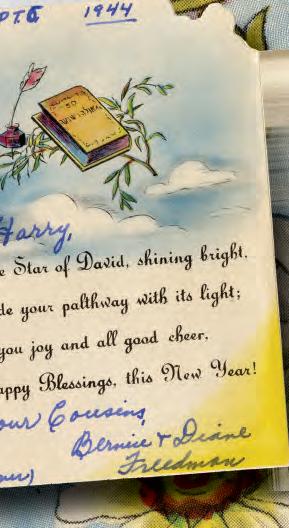







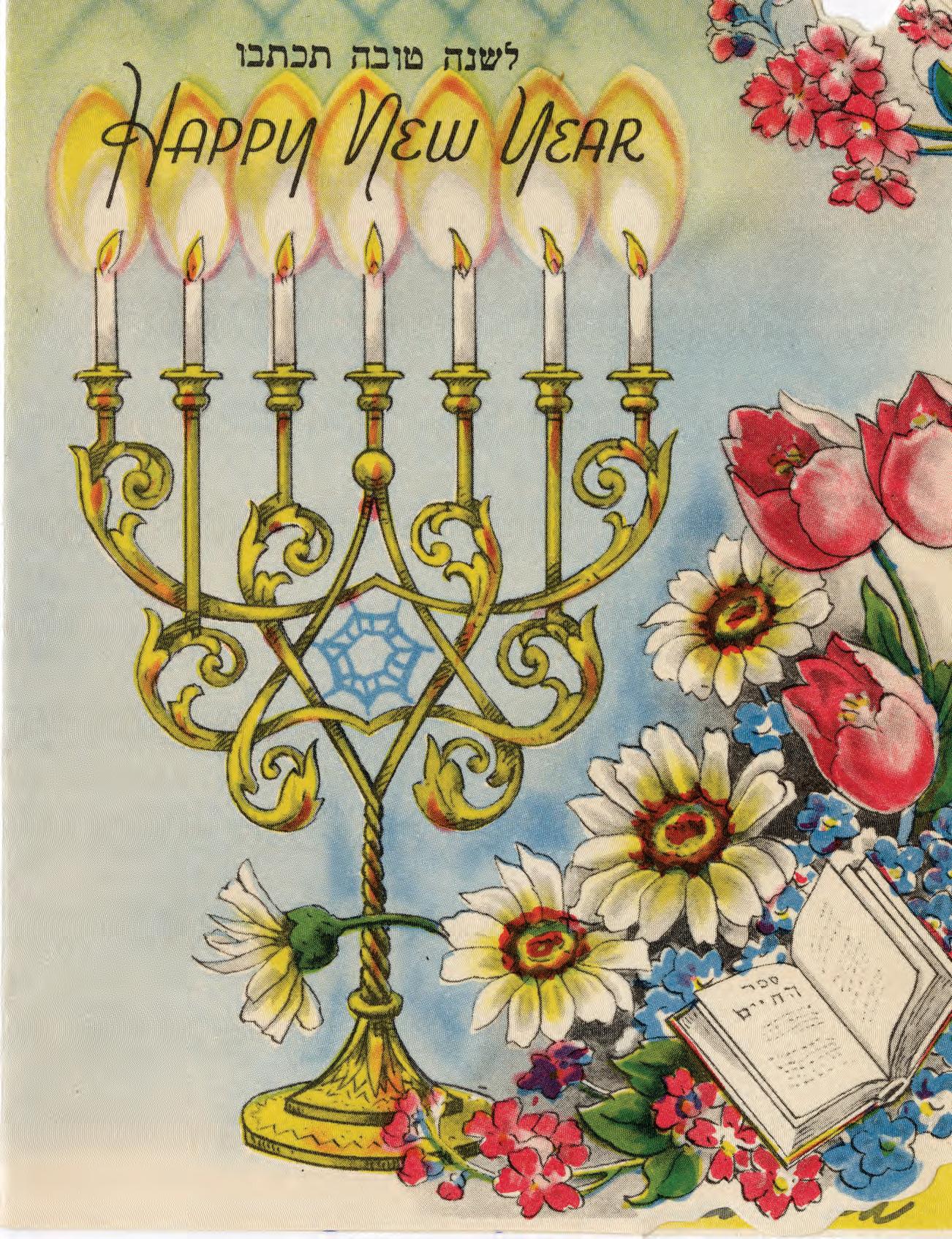
FROM THE DIRECTOR
Dear Friends of the Wisconsin Veterans Museum,

Greetings! I hope this finds all of you well and safe. The staff and I are pleased to bring you yet another informative issue of the Bugle. We reopened the museum on July 1 of this year, and it is exciting to once again welcome visitors and share our powerful stories and artifacts in the refreshed exhibits. The feedback so far on our exhibits has been outstanding, and we appreciate it. If you haven’t been to see us yet, please do.
We’re looking forward to an active fall. Our Cemetery Tours are about to start, followed shortly thereafter by West Point’s visit to Camp Randall to play the Badgers and then the centennial of the Tomb of the Unknown Soldier on November 11. We’re also hard at work on our next special exhibit, Souvenirs of Service: The Things They Kept, scheduled to open in early November.
This year is also the 80th anniversary of the Pearl Harbor attack on December 7, 1941. This important event in U.S. and world history also involved many Badgers of all ranks and services, some of whom did not survive. Three of those killed, the Barber brothers of New London lost aboard USS Oklahoma, were finally identified in June 2021. This issue explores several Wisconsin stories of that day, with more programming coming as the anniversary approaches.
Souvenirs, the exhibit refresh, many of our programs, and our publications also showcase our interpretive approach, which is to make our stories relatable. Many people who interact with us have some knowledge of or appreciation for the military, but may know little beyond the very basics. In order to make our great stories more understandable to a broad audience, we try and start with concepts everyone, veteran and non-veteran alike, can relate to. As an example, everyone understands the concept of collecting souvenirs, which then frames the stories we present in the exhibit.
Our virtual programs over the past 18 months have generated quite an audience across the state, nation, and even the world. Though the museum is back open and is doing some in-person programs, we also continue our extensive online offerings. Our online presence is only possible with the help and support of the Wisconsin Veterans Museum Foundation. I encourage everyone to see what is available at our website.
Best wishes to all of you, and thank you for your continuing support. See you at the museum soon.
Best,
FALL 2021 9
s ther Bug ditisexcitingtoonceagai Chris Kolakowski
William F. Linley , a Mazomanie, Wisconsin native, joined the U.S. Army Air Corps in November 1940. An airplane mechanic with the 23rd Bombardment Squadron, he was stationed at Hickam Field in Hawaii during the attack on Pearl Harbor. In a letter to his parents from two weeks after, he wrote,



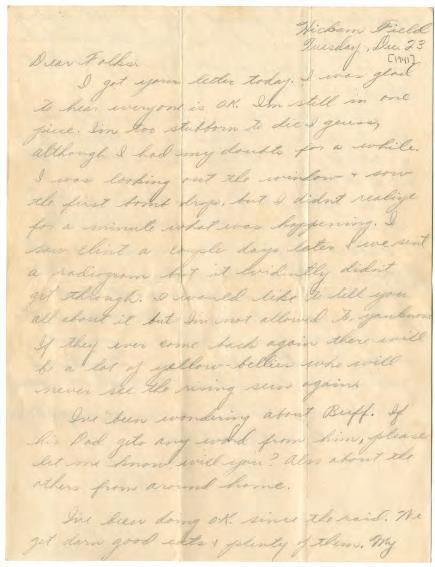


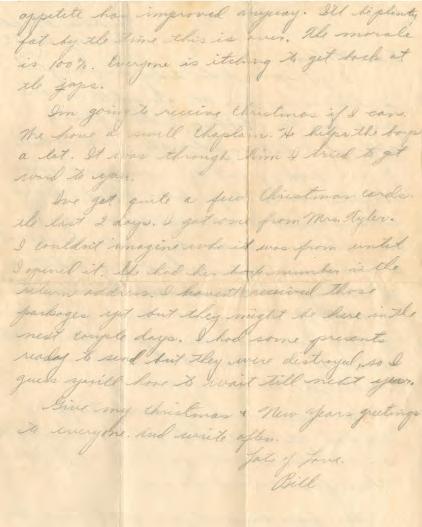

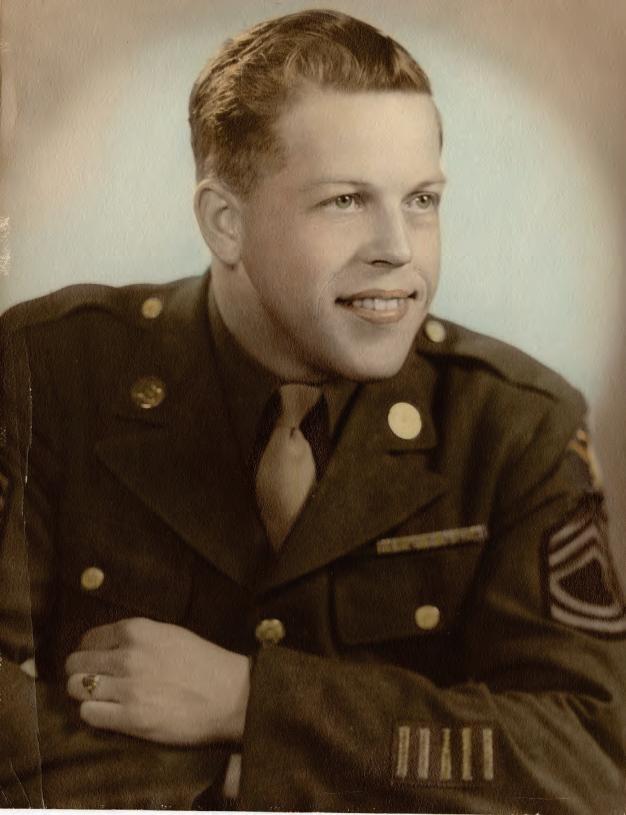
“I was looking out the window and saw the first bomb drop, but I didn’t realize for a minute what was happening.”
He reassured them of his safety, “I’m still in one piece. I’m too stubborn to die I guess, although I had my doubts for a while.”
Following that event, Linley’s unit deployed to the Pacific theater and he participated in the Northern Solomons, Central Pacific, Guadalcanal, and Bismark Archipelago campaigns. He became seriously ill in 1944 and was eventually sent to a stateside hospital in Nebraska. The Wisconsin Veterans Museum proudly preserves his story through his letters and photograph that his family donated.
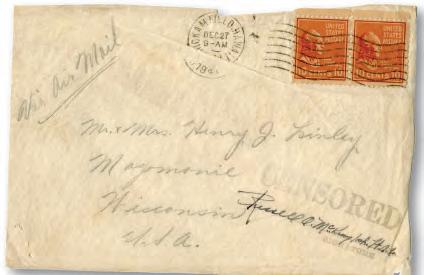
EVERY VETERAN IS A STORY
V





10
Rhoda A. Ziesler, a Manitowoc, Wisconsin native, joined the U.S. Army Nurse Corps in 1939. After training and serving at Camp Custer, Michigan and Camp Claiborne, Louisiana, she deployed to the 215 th General Hospital at Schofield Barracks, Hawaii. She witnessed the attack on Pearl Harbor, writing in her journal that,


“The Japanese planes were flying so low. We could see the rising sun [on the planes].”








Soon after the attacks began, Ziesler and her fellow doctors and nurses began preparing to receive casualties. She spent the hours, days, and weeks following the attack treating the wounded. As the war in the Pacific pushed toward Japan, Ziesler continued to treat Americans wounded in the fighting who were evacuated to Hawaii. The Wisconsin Veterans Museum proudly preserves her story through the objects, papers, photographs, and more that her family donated.

FALL 2021 11
Eighty years ago this October, U.S. Army Chaplain Albin L. Fortney left his post at Fort Niagara, New York to begin an eighteen month foreign duty assignment in Honolulu, Hawaii. It would be just two months later when the thirty-five-year-old first lieutenant from Menomonie, Wisconsin would become a direct witness to the attacks on Pearl Harbor on Sunday, December 7, 1941. That morning Fortney was in his hotel room preparing his upcoming sermon when he heard the heavy bombardment, believing it to be the US Navy conducting target practice despite it sounding atypically close and loud.

Fortney later recounted to his hometown newspaper, The Dunn County News, that when he left the hotel, a sentry at the waterfront alerted him that it was “the real thing.” He then rushed to his commander’s post for instructions when he saw the swarms of planes and battle in the distance for himself.
According to the April 1943 paper, “Fortney went with his post surgeon to give spiritual aid to the wounded. Two causalities, one a death and the second a wounded soldier that were [the first casualties] officially reported after the attack on Pearl Harbor, happened on Chaplain Fortney’s post.” In the aftermath, Fortney helped identify bodies as well as wrote letters home to the families of those who had perished. For a chaplain who believed “that caring for the spiritual needs of the men in the various branches of the services
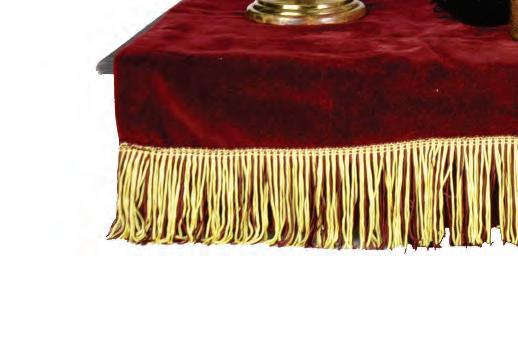

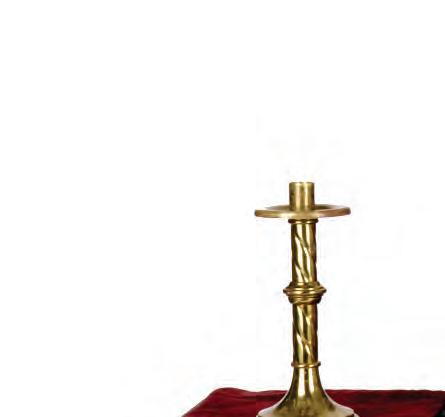
is most essential, both in quiet camps and bases and along fighting fronts,” his time on the islands would not be his only firsthand exposure to war. After a brief period stationed in Oklahoma in 1943, Captain Fortney deployed to the European Theater to serve as a chaplain with the Third Army. While overseas, Fortney—fluent in Norwegian since childhood—was named Chief of Chaplains of the Liberation Army of Norway and honored with the Norwegian Freedom Cross by King Haakon VII for his service to the country. And even though war’s end brought him back stateside in 1945, he returned to Europe in 1947 for a year of service in Schweinfurt, Germany followed by a year stationed in Vienna, Austria before being discharged on October 7, 1949. Reverend Fortney then continued to serve others in the civilian ministry until his retirement in 1959. The Wisconsin Veterans Museum is pleased to have recently added this historically significant chaplain’s kit and stole to the permanent collection.

12
COLLECTIONS FROM THE
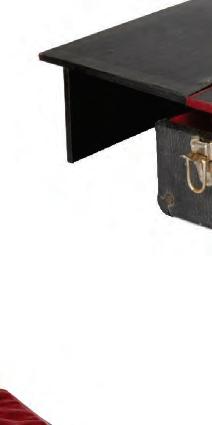
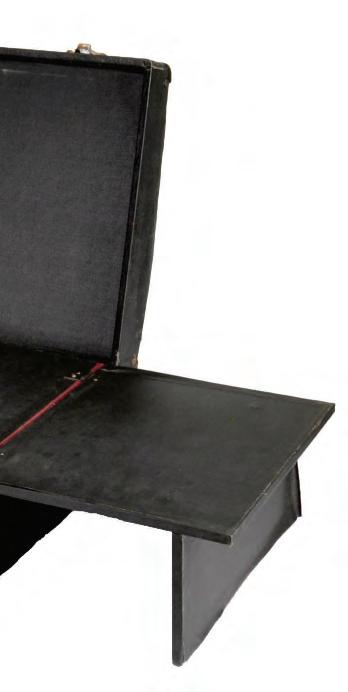
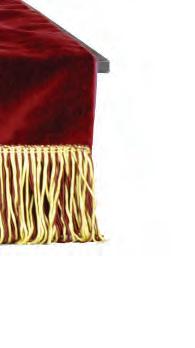
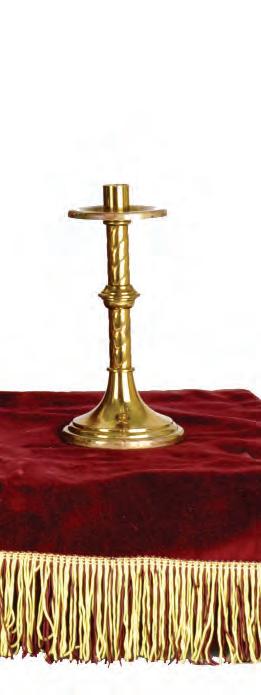


COLLE C T FRO M



 By: Andrea H Collections M
By: Andrea Hoffman Collections Manager
By: Andrea H Collections M
By: Andrea Hoffman Collections Manager
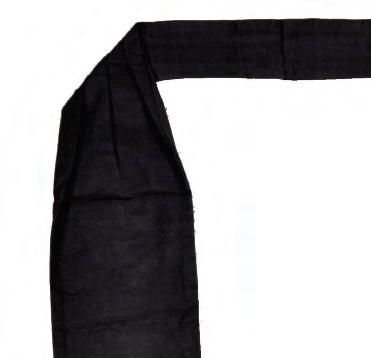
A view of some of the contents held in Albin L. Fortney’s field chaplain’s kit, which could be used for both Protestant and Catholic services and rites. These suitcase-style kits were first issued by the US Army during World War II. V2021.011.2.1-14
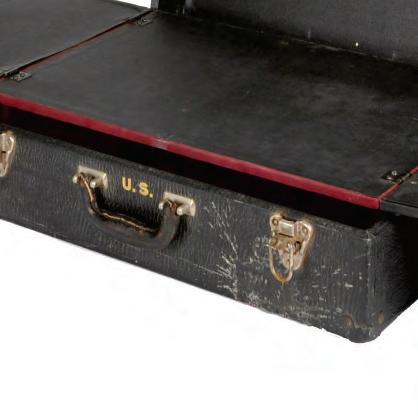
Then-Major Fortney’s ecclesiastical stole displays familiar World War II-issued service ribbons as well one for the Norwegian Haakon VII Freedom Cross at lower right. V2021.011.1


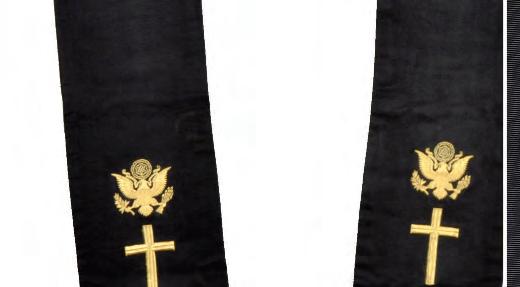

FALL 2021 13
FALL
Fifteen minutes before 8 a.m. on Sunday, December 7, 1941, 183 Japanese planes winged in over Kahuku Point, the northernmost tip of Oahu in the Hawaiian Islands. Their commander, Fuchida Mitsuo, surveyed the scene and signaled for the attack to begin. The formation broke apart as groups of planes zoomed toward their targets in and around the U.S. naval base at Pearl Harbor and other points on the island. Those on the ground did not know it, but the United States was enjoying its last minutes of peace.
The attack on Pearl Harbor brought the United States into World War II. It galvanized U.S. popular opinion against Japan and its German and Italian allies in the Axis Powers, and marked a watershed in U.S. history. More than 200 Wisconsin service members were on Oahu that day eighty years ago, with over fifty-five killed. This article, along with other sections of this magazine, tells the story of Pearl Harbor through their eyes, using accounts and information from the Wisconsin Veterans Museum Collection. Japan had been on a collision course with the United States and its allies for a long time. When war looked imminent in 1941, the Japanese military decided to launch simultaneous attacks across the Far East. At the start of the war, Japan aimed to eliminate the three great pillars of Allied Pacific defense: the British Force Z at Singapore, the U.S. Far East Air Force in the Philippines, and the U.S. Pacific Fleet at Pearl Harbor. This latter target involved sending six carriers over 4,000 miles from Japan to launch a
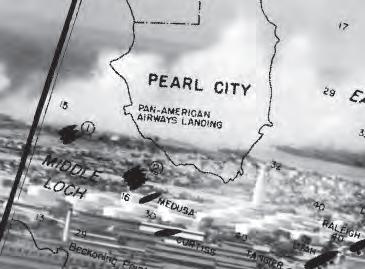
surprise attack, with the goal of knocking out the American battleships and aircraft carriers.




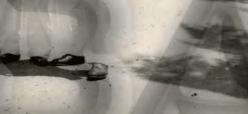




On December 7, most of the fleet was moored in the harbor around Ford Island, which was home to the U.S. Army Air Force’s Hickam Field. The fleet’s centerpiece was Battleship Row, where seven of the eight battleships moored, four of them in tandem. (The eighth battleship, USS Pennsylvania, was in a nearby dry dock undergoing repairs.) Destroyers, cruisers, and submarines grouped in other places around the harbor. Fatefully, the American carriers were all at sea.
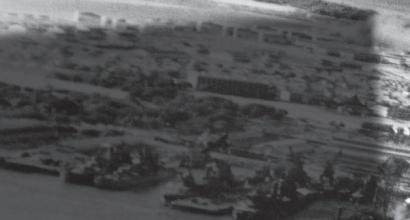


American radar picked up the incoming Japanese planes, but they were mistaken for American bombers due to arrive from California. Japanese midget submarines were spotted and sunk off the harbor’s mouth in the 90 minutes before Fuchida sent his signal. Nonetheless, the Japanese achieved surprise as they started their attack at 7:55.

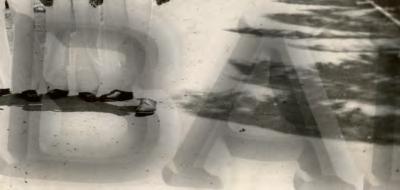
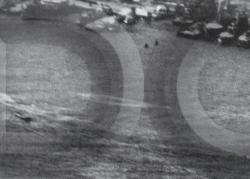

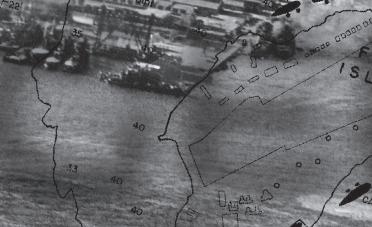
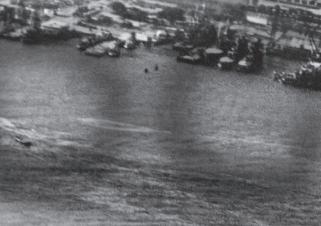

Madison’s Charlie May was aboard cruiser USS Phoenix waiting for a launch to take him over to church services aboard battleship USS Arizona.
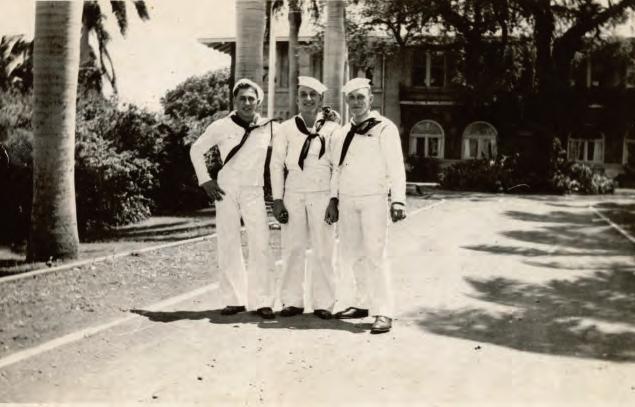
“While we were standing there we noticed the planes coming in which we first naturally took as being our own planes and that it was training,” he later recalled.
“We even thought it was training when they started diving on the battleships. But when they started releasing the torpedoes it started





becoming evident that it was something else. We noticed the Rising Sun emblem on the planes, and then we knew that it was the Japanese. So about that time, why, the General Quarters sounded, and everyone went to their battle stations.”









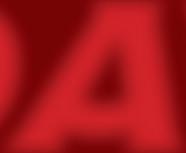


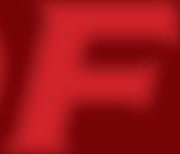







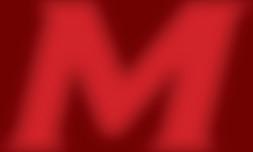

At Hickam Field, DeForest’s Art Rortvedt noticed Japanese fighters swooping in as he headed for the bathroom to prepare for his day.
“It was just all of a sudden,” he said. "You see, that was normal for on a Sunday morning. It was normal for the navy to play war games. And so that’s what they thought it was at first, because they heard some explosions and things, and thought, ‘Oh they’re playing real good today.’”
Japanese torpedo planes wheeled in over the harbor and started attack runs on Battleship Row. As the same time, fighters and bombers attacked Hickam Field, smaller ships, and naval base installations. As explosions shattered the Sunday peace, those on the ground and on ships scrambled for duty stations and to prepare a defense.
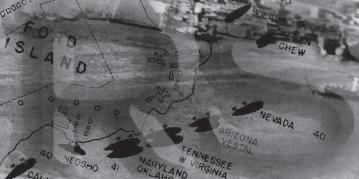


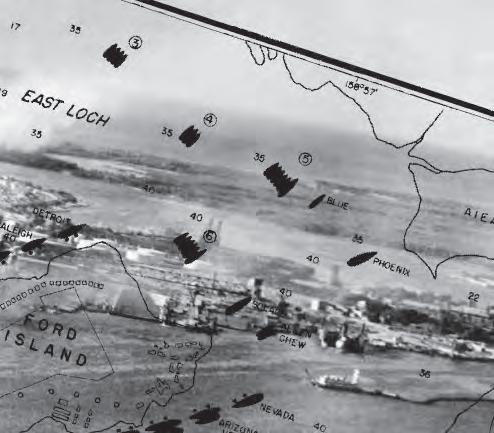

The world found out about the attack at 7:58 am when Rear Admiral Patrick N.L. Bellinger radioed in the clear, “AIR RAID PEARL HARBOR. THIS IS NOT [A] DRILL.”


 By: Chris Kolakowski Museum Director
By: Chris Kolakowski Museum Director
On Battleship Row, Milwaukee’s Franklin Van Valkenburgh, commander of the Arizona, made his way to the bridge, where he started directing the defense of his ship. Next to the battleship stood the repair ship Vestal, commanded by Milwaukee’s Cassin Young. Visible from Arizona’s bridge were six of the seven ships on Battleship Row; only USS Nevada, moored behind Arizona, was out of view. Ahead of Arizona, Japanese torpedoes hammered West Virginia, Oklahoma, and California. Bombs and strafing targeted Tennessee and Maryland. Several torpedoes hit Oklahoma in quick succession, and within minutes she capsized. West Virginia nearly suffered the same fate, but quick-thinking damage control officers counter flooded and she started sinking on an even keel to the bottom.
Suddenly a Japanese bomb detonated the forward magazine of Arizona. The ship leapt up as a massive fireball engulfed her. The explosion’s pressure wave reverberated across the harbor, blowing Young overboard. Stunned and injured, he swam back to his ship and resumed command. With Vestal afire and taking water, Young ordered her to get underway and away from Arizona lest another explosion do more damage.
Elsewhere on Oahu, confusion reigned as the Japanese attacked other installations at Wheeler Field, Schofield Barracks, and elsewhere. Casualties streamed into Schofield’s hospital, as doctors and nurses set to work. Among them was Manitowoc’s Rhoda Ziesler, who had arrived

AIR RAID PEARL HARB O R .
THI S I S N O T A DRILL.


in Hawaii just weeks before. (Her account of the day is reproduced elsewhere in this issue). She worked two days straight and for months afterward slept with a knife under her pillow. After the first wave departed, a second wave of 171 planes followed hard on its heels. These raiders targeted Pearl Harbor and Kaneohe Naval Air Station, facing more prepared defenses than the first wave. As the Japanese appeared, Nevada was underway making a desperate breakout attempt. The new wave of attackers inflicted more damage and confusion, despite significant American defensive fire. The Japanese also forced Nevada to beach herself rather than be sunk in the channel leading to open sea.
The hurricane of raiders ended shortly before 10:00 am. “There were a lot of rumors around” regarding more attacks, possible landings, and other developments," remembered Rortvedt. But the fighting was over for the day. Against a loss of twenty-nine Japanese planes shot down, seventy-four damaged, and sixty-four dead, 2,403 Americans were killed and another 1,178 wounded. Every battleship at Pearl Harbor was damaged or sunk, along with three cruisers, four destroyers, and several other ships. Ashore, 188 aircraft were destroyed and another 159 damaged. This was the worst defeat the U.S. Navy had suffered since the Civil War.
The greatest loss of life was in the sinkings of Arizona and Oklahoma, which claimed 1,177 and 429 dead, respectively. Many aboard Arizona lie entombed in the hull, which is preserved as a memorial, to this day. Others were consumed by the fires that raged aboard for days; Van Valkenburgh’s body met this fate, his Naval Academy ring the only item recovered. At least nineteen other Badgers died on Arizona with him.
Two of the sixteen Medals of Honor earned that day went to Young and Van Valkenburgh. Young received his “for distinguished conduct in action, outstanding heroism and utter disregard of his own safety, above and beyond the call of duty.” Van Valkenburgh’s was one of eleven posthumous awards, citing his “conspicuous devotion to duty, extraordinary courage and complete disregard of his own life.”
Of the twenty-one ships lost or damaged on December 7, only three —Arizona, Oklahoma, and Utah —never returned to duty. The unidentifiable bodies recovered by salvors, including 388 from Oklahoma, were buried in the Punchbowl in Honolulu. Oklahoma’s total included ten Badgers, including New London’s three Barber brothers, whose loss “filled the town with tears” according to the local newspaper. In 2015, the Department of Defense started identifying these men through DNA testing, and as of this writing less than thirtyfive men from Oklahoma remain unknown. In June 2021, the three Barbers were positively identified after seventy-nine years.
On December 8, people all across Wisconsin gathered around their radios as President Franklin Roosevelt pronounced December 7, 1941 as “a date which will live in infamy.” Within a week the United States would be at war with the entire Axis, a conflict lasting until 1945. Over 332,000 Badgers served in World War II on all battlefronts, with over 8,000 paying the ultimate price. Wisconsin’s service and sacrifice started in the first minutes of the war at Pearl Harbor.
16
Though the centennial commemorations of World War I came to a close three years ago in 2018, there is still one more anniversary that we should solemnly remember. This year marks one hundred years of the Tomb of the Unknown in Arlington National Cemetery. During the centennial commemorations, we talked a lot about the “firsts” of the First World War: tanks, planes, gas, etc. There is one more “first” that is lesser-known though no less historically
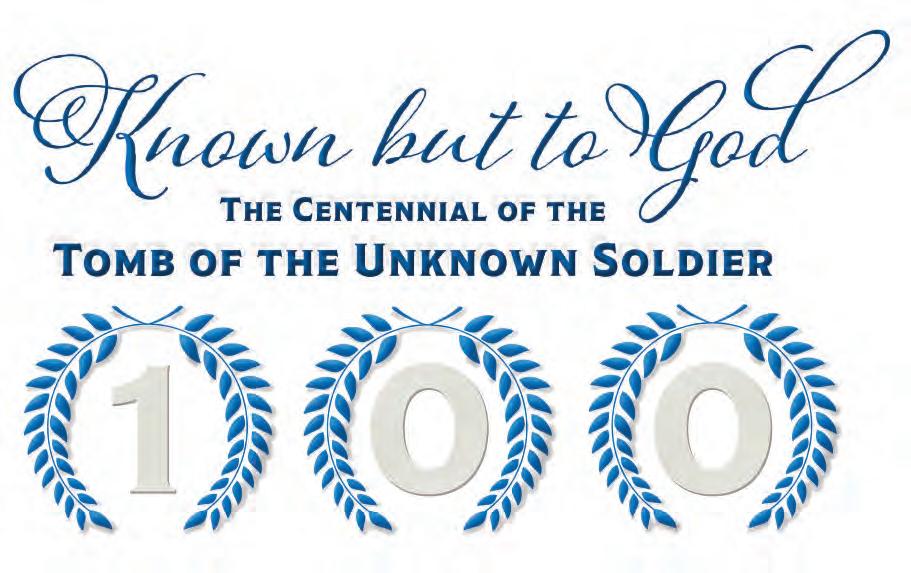

significant: for the first time the U.S. government took full responsibility to honor its war dead from initial identification to family notification and finally to ultimate disposition. For the first time in our history, the U.S. government set the expectation (and solidified it in policy) that, in exchange for the military service of its citizens, the state promised to be responsible for the return and final resting place of the honored dead.
Department notifying them of the death of their loved ones instead of having to scan long lists of names published in local newspapers. A follow-up letter from the adjutant general provided families with more details and included this promise:
“It is expected, however, that the remains of all American soldiers dying abroad will ultimately be returned to the United States for burial at their former residences at public expense.”
FALL 2021 17
For the first time, families received a telegram directly from the War
Edward Lauer, a WWI 32nd Division veteran from Milwaukee, visited the Tomb of the Unknown sometime before the current monument superstructure was added in 1931. On his own photo he wrote: “note—no guard at this time.” WVM MSS 32
At the close of the war, the War Department offered each family the option of either repatriation of their loved one's remains or final burial amongst their comrades in the first-ever American national cemeteries in Europe. Of course, this option was truly only afforded to those families whose loved ones had been positively identified. Learning from previous conflicts such as the Civil War, where roughly only 60% of all Union dead were identified, the Army’s Quartermaster Corps established a brand new type of unit, the Graves Registration Service, to help locate temporary battlefield burials and identify the deceased. Between the graves registration units and the new dog tag identification system, remarkably about 97% of America’s "Soldier Dead" were positively identified. However that meant that almost 3,500 remained either missing in action or unidentified, and their families left without the closure of an option.
As part of the agreements regarding the foreign national cemeteries in France, all of the American unknowns were left interred "over there" all but one. Following the other allies that had their own ceremonial internments of their unknown soldiers in their respective places of honor on Armistice Day, November 11, 1920, the U.S. planned for its own ceremonial Tomb of the Unknown and aimed for internment on Decoration (Memorial) Day in May 1921. More time was needed for preparation and planning, however, so Armistice Day, November 11, 1921 was selected instead. In October four unknowns were randomly selected, one from each of the four new National Cemeteries: Aisne-Marne, Meuse-Argonne, Somme, and St. Mihiel. The grave numbers for disinterment were randomly

selected, with an alternate number picked in case any possible means of identification was found on the first choice. To guarantee a random selection of a truly unknown soldier, any records of the four selected were destroyed. The four were lain in state in the Hotel de Ville in Chalons, France, and the order in which they were laid out was rearranged in the early morning hours the next day so that their cemetery-of-origin was also unknown. The selection was made on October 24th by Sergeant Edward Younger. He laid a spray of white roses on his selection and saluted. The casket was transported across France escorted by an allied honor guard and afforded military honors across the country.
The Unknown Soldier arrived in the U.S. aboard the USS Olympia on November 8 and was lain in state in the U.S. Capitol rotunda “on the same catafalque where only martyred presidents— Lincoln, Garfield, and McKinley—had rested before.” Thousands of visitors paid their respects in the reviewing line with the highest echelons of society, politics, and the military offering tribute. After the national funeral on November 11th, with all the pomp and circumstance of a truly national memorial tribute, the sarcophagus was sealed with a simple stone slab.
The monument superstructure that visitors see today was added in 1931. On the west facing panel is the inscription, “HERE RESTS IN HONORED GLORY AN AMERICAN SOLDIER KNOWN BUT TO GOD.” In May 1958 an Unknown from World War II and an Unknown from Korea were ceremoniously interred alongside their comrade-in-arms from World War I. On Memorial Day in 1984 an Unknown from Vietnam joined their comrades-in-arms, but in 1998, with DNA testing, the remains were
18
The crew of the USS Nitro pay tribute at the Tomb of the Unknown on August 29, 1922. WVM Mss 1040
positively identified and 1st Lieutenant Michael Blassie was transported to his family in St. Louis, Missouri where he was reinterred.
At the Tomb of the Unknown, military honors are paid every minute of every day with a 24 hour honor guard since 1937. The sentinels pace twenty-one steps in front of the tomb, pause for twenty-one seconds facing the tomb, pause for an additional twenty-one seconds facing their route, before beginning the twenty-one paces back—all symbolic of one of the highest military honors: the twenty-one gun salute. The Tomb of the Unknown is deeply symbolic. It is representative of a national tribute to all of America’s fallen, not just the unknowns. But for those families that never got the closure of knowing the final resting place of their loved ones—those that may forever remain Missing In Action or an “Unknown” gravestone among rows and rows of white marble headstones in a national cemetery—it represents the glimmer of hope that their loved one is possibly the one enshrined in the Tomb, guarded by devoted comrades 24/7, and honored by millions every year.
Do you know anyone with a Wisconsin connection that has served as a sentinel at the Tomb of the Unknown at Arlington? We would love to talk to them about collecting their story. Contact us at: Kevin.Hampton@dva.wisconsin.gov

On November 10, 1921, above the fold on the front page of The Wisconsin State Journal (simultaneously published in several other newspapers across the country), was a piece of prose by a United Press correspondent that captured that deeply personal and symbolic meaning of the Tomb. It relates a story of a woman waiting in the long visiting line for a chance to pay her final respects to the Unknown lying in state in the US Capitol rotunda. She is one of the thousands of mothers whose son was either listed as missing in action or unknown from the war. She never had the option to bring her boy home to rest or even know where his final resting place was…until now. She’s filled with pride because in her heart she’s sure that this randomly selected “unknown” is actually her son. And for the first time she has closure with not only the knowledge of where her boy rests for eternity, but that he’s honored in the same way and among the greatest of American heroes.


FALL 2021 19
We got a special Thanksgiving dinner. We had some turkey and T-rat turkey, I ended up getting sick on Thanksgiving. I had to go to the medic. I probably caught food poisoning just from sitting around. Christmas was a good time and people started making their own hooch...We didn’t have a still but just a simple time yeast and a kind of fruit water and sugar and let it ferment and it worked. You get used to it.
Harold A. Fritz, U.S. Army, Vietnam, retells the story of Sergeant Dorsey getting the Thanksgiving meal to troops under fire:


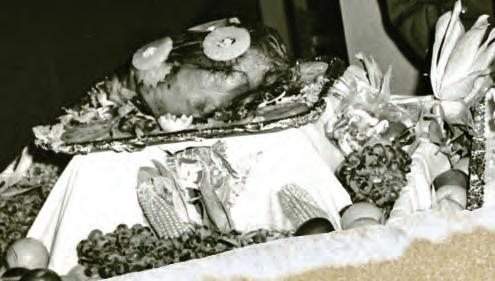

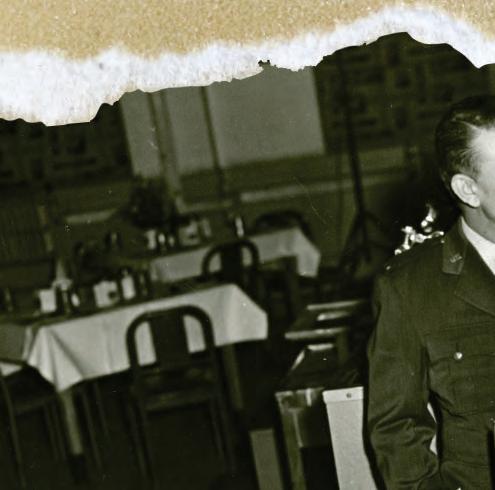



"He says, 'No, I’m going back to get some more turkeys.' And I said, 'Wait a minute. You’re gonna go back up that road? You want me to send another element up with you after you’ve been hit?' And he said, 'I’m gonna get some turkeys for the troops.' And so we gave him a two platoon escort, I gave him an M-16 machinegun and a case of M-79 grenades, and a M-79 grenade launcher, two M-16 rifles, a .45, a case of hand grenades ... and literally coming back down, he got a new load of turkey, you could hear these explosions and these rounds going off and I called the platoon leader and I said, 'What is that?' He said, 'Well, that’s the Mess Daddy reconning by fire.'"

 —John D. Morgan, U.S. Army, Persian Gulf War, flashes back on his time in Saudi Arabia and holidays.
Harry N. Loeb, a Madison, Wisconsin resident, served with General Hospital 181 in Karachi, India during World War II. This image features a Santa Claus riding a camel, giving presents to children. WVM.1998.I112
Louis Heilman, a Friendship, Wisconsin resident, served with Companies C and G, 8th United States Infantry Regiment during both the Spanish-American and Philippine-American Wars. This photograph, taken in 1900, documents a Thanksgiving spent in Cuba. WVM.2066.I010
—John D. Morgan, U.S. Army, Persian Gulf War, flashes back on his time in Saudi Arabia and holidays.
Harry N. Loeb, a Madison, Wisconsin resident, served with General Hospital 181 in Karachi, India during World War II. This image features a Santa Claus riding a camel, giving presents to children. WVM.1998.I112
Louis Heilman, a Friendship, Wisconsin resident, served with Companies C and G, 8th United States Infantry Regiment during both the Spanish-American and Philippine-American Wars. This photograph, taken in 1900, documents a Thanksgiving spent in Cuba. WVM.2066.I010
Veterans holiday experiences while serving can vary greatly. From a tin of heated up T-rations to a four-course turkey dinner, in the air or underwater, these peculiar memories remain forever etched in the minds of Wisconsin veterans. Today, we share their stories from the Wisconsin Veterans Museum Oral History and Archives Collections.

“But we had one Halloween party, no costumes, but we were supposed to be there in costume. It was amazing what the girls came up with. One of them took her raincoat and made mouse ears, you know, and the hat, and I went as a pirate— took lipstick and made all kinds of marks on my body and I couldn’t get it off, so I got in trouble the next day. So just routine things, but that was not a fun party.”
had one mes, but w ere costu what the
“But no cost th amazi at was es nce al Base


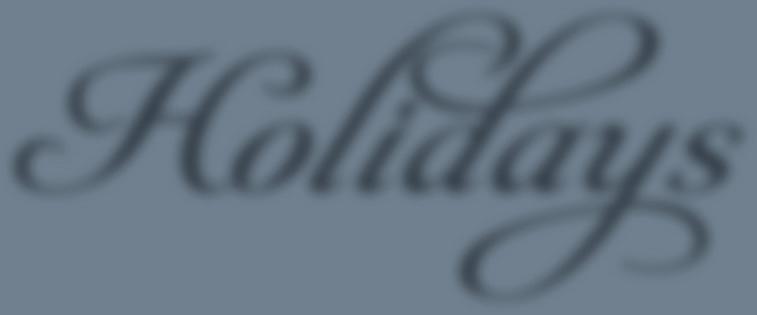


ings, rg, S War ure Isla
—Marian Swanberg, United States Marine Corps, recalls her World War II experience of Halloween at Treasure Island Naval Base
John P. Hale, a Lima Center, Wisconsin resident, served on the USS Midway (CVA-41) from 1951 to 1954. This slide, taken aboard the USS Midway features a Christmas display of a tree and cards accompanied by tinsel and fake snow.

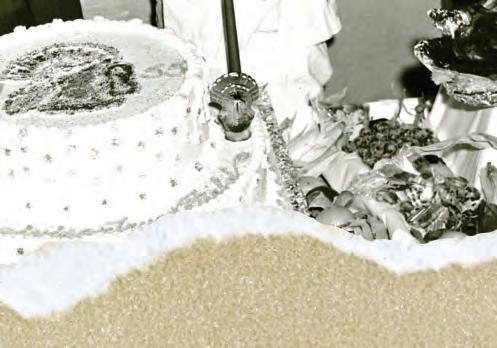 (Photo above) On the right James E. McMahon, United Stetes Marine Corps and Air Force veteran of World War II and Korean War. WVM.0380.I002.
(Photo above) On the right James E. McMahon, United Stetes Marine Corps and Air Force veteran of World War II and Korean War. WVM.0380.I002.
Modern tabletop wargaming originated in the 19th century when the Prussian General Staff used it as a training tool for battlefield commanders to forecast the outcome of potential battles. With the resounding Prussian victory over France in the FrancoPrussian War of 1870, military leaders and civilians the world over recognized the value of this strategic training. Card based wargaming brings a randomness to play that can mimic the uncertainty of battlefield situations: non-fixed terrain, vehicles, turns and timing, and other variables requiring a flexibility to overcome to achieve victory.

Legion Wargames was founded by husband and wife team Randy Lein and Jodi Joachim in May 2009. With a focus on topics not yet gamed or with new play dynamics that offers a fresh experience, the Holmen, Wisconsin company has created games for topics as diverse as the Battle of Blenheim, the Spanish-American War, and World War II. Their games have found praise and acclaim from the tabletop gaming community. You can find a game that suits your interests at The Museum Shop. Store.WisVetsMuseum.com







22
Norris Tibbetts, a Vermont resident, served with the 871th Infantry Regiment, 10th Mountain Division and the 34h Infantry Regiment in World War II. This photograph captioned “Christmas Cheer in my tent” features fellow soldier Pvt. Gordon Dicks with an improvised wreath, taken on the Hunter-Liggett Military Reservation in 1942. After his service, Tibbetts settled in Madison, Wisconsin. WVM.0912.I017.01
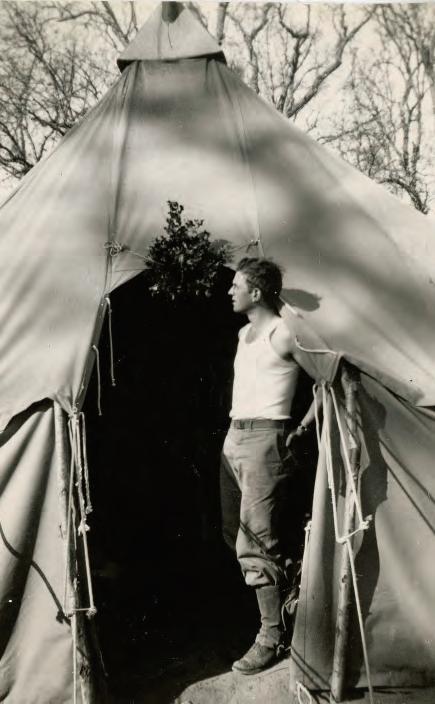
Donald Schroeder, U.S. Navy, World War II, thinks back on New Year’s Eve 1945 in New York City Harbor supervising an intoxicated crew:
“And around midnight, they were trying to blow the whistle. And I tried stopping them, when I tried stopping the guy on the bridge, the guy down in the engine room would blow it. So I finally gave up on that, and I let them blow what they wanted. But then one guy got into the flare pistol locker, where they got all the different colored shells for different emergencies. And the ferry tie-up dock was right next to us, going over to New Jersey. And so he pulled out this flare pistol, and he starts firing them at that ferry. Not at, but up in the air so they would explode in the sky. And I finally got that away from him. And the next morning, I got called down to the captain’s office, and he said, ‘Quartermaster, what the hell went on here last night?’ I says, ‘Nothing that I know of.’ He said, ‘Are you sure?’ I said, ‘Yeah.’ ‘Well,’ he said, ‘here, read this.’ It was a radiogram from the harbor master that said, ‘You were the smallest ship in the harbor but you made the most noise last night.’ He said, ‘Do you know what he’s talking about?’ I said, ‘No.’ And he said, ‘I happened to be on that ferry coming back across when you were shooting off the flare pistol.’”
Dean Rockstad, a Madison, Wisconsin resident, served with the Korean Military Advisory Group (KMAG) Detachment in South Korea during the Cold War. This photograph was taken during a New Year party on their base in South Korea. WVM.0611.I232.M7
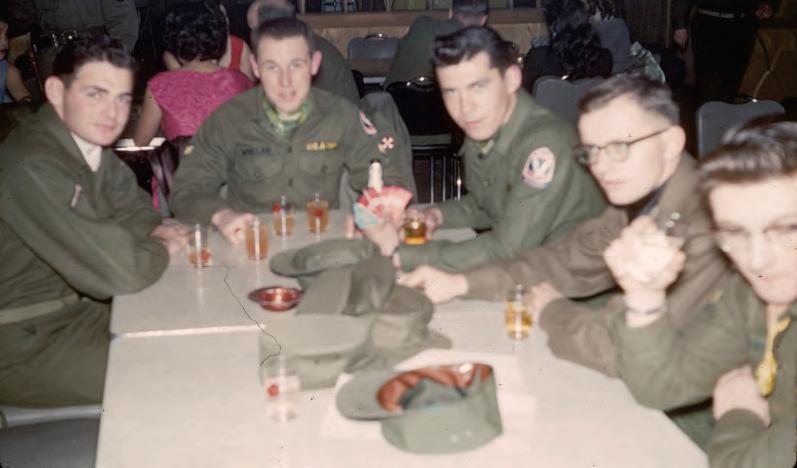
FALL 2021
23
Why Now?
Perhaps it is not surprising to some that the funding for a new Wisconsin Veterans Museum was not included in the state budget recently passed by the legislature and signed by the Governor. We at the Foundation, however, believe the time is at hand to build a commitment of state and private funding to provide a facility for our museum, commensurate with the museum’s charge to exhibit the role of Wisconsin and her veterans since the Civil War. It is understandable that legislators, donors, and citizens ask why such an undertaking is currently relevant. There are certainly enough worthy projects competing for both private and public funding. As the President of the Wisconsin Veterans Museum Foundation, I asked myself the same question. Two issues immediately came to mind.
Our collection houses some of the most important and rare artifacts of any military collection in the nation. On a recent tour of our storage facility, I was surprised as our museum director, Chris Kolakowski, produced the only known example of a Black Hat worn in combat at the battle of Gettysburg during the Civil War. The Iron Brigade was one of the most feared and heavily decorated military units in the Army of the Potomac. They were decisively engaged in the battle of the Corn Field at Antietam
and on the first day of the battle of Gettysburg. Their defining symbol was the unique black stovepipe hat they wore into battle. Our example sits in a box in the storage facility. General Arthur MacArthur, father of Douglas MacArthur, lived in Milwaukee when he joined the 24th Wisconsin Volunteers during the Civil War. He was awarded the Congressional Medal of Honor when he led the charge of his regiment at the Battle of Missionary Ridge in Tennessee. It was reported he took the regimental flag with him, planted it in the ground at the Ridge and shouted, “On Wisconsin.”
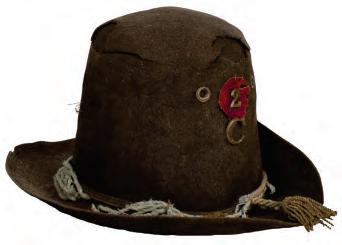
That flag sits on a tray encased at the storage facility.
Whereas most museums our size can display 20% of their collection, due to space limitations we can only display 3% of ours. Our museum director starts each of his presentations by offering three important points.
1. Every veteran is a story
2. Wisconsin was there
3. It still maters
It is his last point that I find compelling for this presentation. It may matter now more than ever. Many questions and challenges are being raised as to the legitimacy of our national story. We need a place where we can restore our faith in the American saga. We need a place where our children can see and hear the stories, not just of the individual veterans, but of the cultural, racial, and ethnic diversity of those veterans. Wisconsin women and men from every background sacrificed to preserve and defend the traditions, and most importantly, the promise of a better future this country represented for themselves and their children. We need a spacious, modern venue to celebrate our national story and the rich tradition of service to that nation by Wisconsin citizens.
It is with these reasons in mind that I ask our donors, citizens, and legislators to help us shout “On Wisconsin” by helping us fund a new Wisconsin Veterans Museum.
In gratitude,
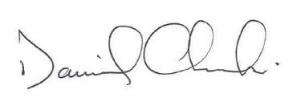 Daniel Checki Foundation President
Daniel Checki Foundation President
P.S. Interested in supporting this project? Visit wisvetsmuseum. com/foundation/give-now/, use the enclosed envelope or call the Foundation office at (608)261-0536.
24
FOUNDATION FROM THE
Honoring military families
Help recognize members of the military and veterans. Nominate a family member or friend today at operationfanmail.com.
We salute the brave men and women who are currently serving or who have served our country. Nominate an active duty service member or a veteran!
136 individuals and families honored since 2007
Honorees will receive four tickets to a Packers home game and be recognized in-stadium prior to the national anthem. In addition, Operation Fan Mail families will be recognized on packers.com, social media, and ESPN radio.
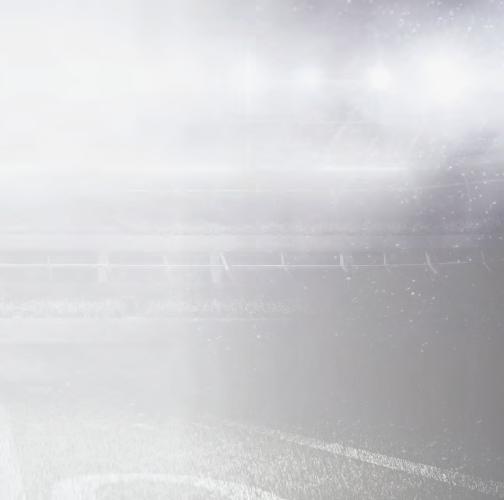

If you know someone whose bravery, sacrifice, and dedication deserves to be honored, we invite you to submit an application.
To apply, share an essay of 500 words or less describing why a particular family should be saluted at operationfanmail.com.

WPS Health Solutions is proud to present Operation Fan Mail in partnership with the Green Bay Packers.
Caring for military families for 75 years.
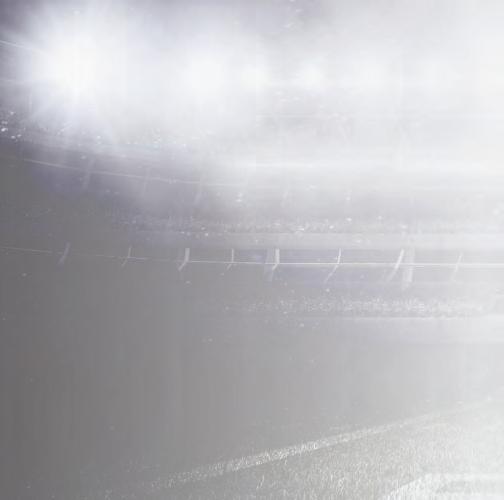
©2021 Wisconsin Physicians Service Insurance Corporation. All rights reserved. JO21104 35466-200-2108 Green Bay Packers partnership is a paid endorsement.
Mark Your Calendar
HISTORIAN HOWTO
18
12:00-1:00PM
The purpose of this online (ZOOM) class is to teach the student how to use the Online Computer Library Catalog (OCLC) for cataloging oral histories on WorldCat.Org.
TRIVIA NIGHT
19
OCT 1
7:00–8:00PM
29
MOVIE NIGHT
7:00–8:00PM
All Quiet on the Western Front
Grab some popcorn and a seat in your favorite chair, and join us for a Movie Night and Virtual Discussion with the Wisconsin Veterans Museum Staff.
TRIVIA NIGHT
Join us for our virtual trivia night and test your historical knowledge. Individuals or teams welcome.
MOVIE NIGHT
7:00–8:00PM
Mr. Roberts (1955)
Grab some popcorn and a seat in your favori te chair, and join us for a Movie Night and Virtual Discussion with the Wisconsin Veterans Museum Staff.
BOOK TALK 12:00 1:00PM
Dr. Brian Jordan—A Thousand May Fall: Life, Death, and Survival in the Union Army, an intimate chronicle of the Civil War from the common soldier’s perspective.
BOOK TALK
12:00 1:00PM
Dr. Teasel Muir-Harmony—Operation Moonglow: A Political History of Project Apollo, a story of politics and propaganda; diplomacy and spaceflight; decolonization and globalization to reveal the political forces that not only sent humans to the Moon but also attracted the largest audience in history.
MESS NIGHT
5:30–8:00PM
Please join us for the return of our quarterly dinner series with author Joseph Tachovsky.
$38 MEMBERS | $46 NON-MEMBERS | $30 STUDENTS (W/ID)
6 10
19 15
7:00–8:00PM
Join us for our virtual trivia night and test your historical knowledge. Individuals or teams welcome.
CURATORS CONVERSATION
12:00–1:00PM
Road to War in the Pacific: The 80th Anniversary of the Attack at Pearl Harbor
VIRTUAL DRINK & DRAW
7:00–8:00PM
Gather your art supplies, pour yourself a beverage, and bring your artistic energy as we spend the evening together stretching our creative muscles.
14
TRIVIA NIGHT 7:00–8:00PM
Join us for our virtual trivia night and test your historical knowledge. Individuals or teams welcome.
17
23 18
MOVIE NIGHT 7:00–8:00PM
Jarhead (2005)
Grab some popcorn and a seat in your favorite chair, and join us for a Movie Night and Virtual Discussion with the Wisconsin Veterans Museum Staff.
*For detailed information and registration visit: W WisVetsMuseum.com/events
DEC
NOV
NOV
26
THANK YOU DONORS
Dane Arts
Edgewood College Dept. of Military and Veteran Services
Sherman, Ray & Lendoris
WPS Health Solutions
Bieniek, Brian
Civil War Round Table of Milwaukee, Inc. & Iron Brigade Association
Disabled American Veterans Department of Wisconsin
First Business Bank
Hagen, Scott & Natalie
Patterson, Bill
RP Adler’s Pub & Grill
Smith, Craig
The Suby Group
U.S. Vet General Contracting, LLC
Wilkening, Patricia
Wagner, Dennis
Wegner CPAs, LLP
Wren, Christopher
Ackers, Allen
Adolphson, Fred & Janet
American Legion Post 29 (Kewaunee Post)
American Legion Post 59 (Otis Sampson Post)
American Legion Post 111 (Phaneuf-Vanasse)
American Legion Post 175 (Loyal)
American Legion Post 214 (Bates-O’Brien-HoweWiegel Post)
American Legion Post 521 (Robert W. Ginther Post)
Anderson, Merry
Antonuzzo, Christine & Wade Dallagrana
Arestides, Karen
Arnold, Barbara
Assalone, John
Bachmann, Richard
Berens, Todd
Berry, Richard
Bovre, Michael
Brasser, Dale
Brink, Ann Catherine
Brown, David
Bull, Ronald
Burkart, Andrew
Callaway, Martin & Mary
Checki, Daniel
Concklin, Richard & Jan
Crawford, Karen
Douma, Elizabeth
Duecker, Robert
Duerr, Jerome
Dunne, Robert
Eilbes, Paul
Engeler, Jr., James
Frye, Sherry
Gregg, Bruce & Marsha
Gruennert, Jim & Joann
Hampton, Erin
Hanson, Bob
Harned, Lewis
Hauda, William
Hausmann-Johnson
Insurance Inc.
Heiliger, Cheryl
Heiliger, Dan & Tarah
Heiliger, David
Heiliger, Jr., Donald
Helfrecht, Donald
Heuer, LT COL (Ret) Martin
Honkola, Warren
Huismann, Tom & Karen
Hustad, William & Jackie
Jaeck, David
Kaldenberg, Tom
Kallas, Phillip & Priscilla
Klandrud, Kevin & Ellen
Klem, Bruce
Koeppen, John
Kolakowski, Peter & Jane
Krueger, Cal & Susie
Kromanaker, Lisa & Alan
KWVA SE Wisconsin
Chapter 227
LaFeber, Steve
Larkin, Bruce & Rose
Larson, Dorothy
Lindeman, Roy & Dorothy
Liskey, Marley
Luther, Robert & Joann
Lynch, Patrick
Madison History
Roundtable
Marino, Allan
Massoth, Kathleen & M.
Bruce Edmonson
Melancon, David
Merry, Carroll & Jean
Metz, Gundel
Meyer, Gina
Millane, James & Monica
Miller, Rick
Millsap, Nathaniel
Montgomery, William
Morledge, John
Morris, Terrell
Mueller, Tom
Nelson, Dean
Nyberg, Edwin & Sally
Olesen, Gerald
Olson, Margaret Ann
Orlowski, Robert
Parker, James
Passante, Vicki & Tony
Pickhard, Debra & Russell
Robbins, William & Chris
Rowe, Sandra
Schaefer, James
Schemenauer, Ken & Eleanor
Schmidt, Sharon
Schrag, Beverly
Smith, Ken & Linda
Speracino, Denise
Sommers, Mike & Mary
Staab, Daniel
Storch, Marc & Beth
Stubbe, Ray
Stutzman, Randall
Sulman, David & Anne
Altshuler
The Range of Richfield LLC
Thomasson, Del
Van De Loop, John & Brenda
VFW Post 1879
(Edwin Frohmader Post)
VFW Post 2260 (SolvesonMoos-Abrahamson Post)
VFW Post 2312
(Cecil Jones Post)
VFW Post 5373 (Ozaukee
County Memorial Post)
VFW Post 6498
(Gross-Yaksh Post)
VFW Post 7694
(Lachmund-Cramer Post)
VFW Greendale Post
10519
Ward Decatur, Mary Ann
Weier, John & Anita
Westerman, Rich
Wise, Mitchell & Roslyn
Wolf, Richard & Marjorie
Woolley, William & Jean
Zeisser, Jr., Charles
Zimbric, Gerald & Hazel
27
A most sincere thank you to all who donated from June through end of August 2021. Because of your generosity we can provide quality programming and award-winning exhibits.
28 CALL 608.261.0536 or JOIN ONLINE at WISVETSMUSEUM.COM Click on Join | Give GIVE the GIFT of MEMBERSHIP Today! THE WISCONSIN VETERANS MUSEUM 30 WEST MIFFLIN STREET MADISON, WI 53703






































































































































 By: Chris Kolakowski Museum Director
By: Chris Kolakowski Museum Director

















 —John D. Morgan, U.S. Army, Persian Gulf War, flashes back on his time in Saudi Arabia and holidays.
Harry N. Loeb, a Madison, Wisconsin resident, served with General Hospital 181 in Karachi, India during World War II. This image features a Santa Claus riding a camel, giving presents to children. WVM.1998.I112
Louis Heilman, a Friendship, Wisconsin resident, served with Companies C and G, 8th United States Infantry Regiment during both the Spanish-American and Philippine-American Wars. This photograph, taken in 1900, documents a Thanksgiving spent in Cuba. WVM.2066.I010
—John D. Morgan, U.S. Army, Persian Gulf War, flashes back on his time in Saudi Arabia and holidays.
Harry N. Loeb, a Madison, Wisconsin resident, served with General Hospital 181 in Karachi, India during World War II. This image features a Santa Claus riding a camel, giving presents to children. WVM.1998.I112
Louis Heilman, a Friendship, Wisconsin resident, served with Companies C and G, 8th United States Infantry Regiment during both the Spanish-American and Philippine-American Wars. This photograph, taken in 1900, documents a Thanksgiving spent in Cuba. WVM.2066.I010







 (Photo above) On the right James E. McMahon, United Stetes Marine Corps and Air Force veteran of World War II and Korean War. WVM.0380.I002.
(Photo above) On the right James E. McMahon, United Stetes Marine Corps and Air Force veteran of World War II and Korean War. WVM.0380.I002.






 Daniel Checki Foundation President
Daniel Checki Foundation President



